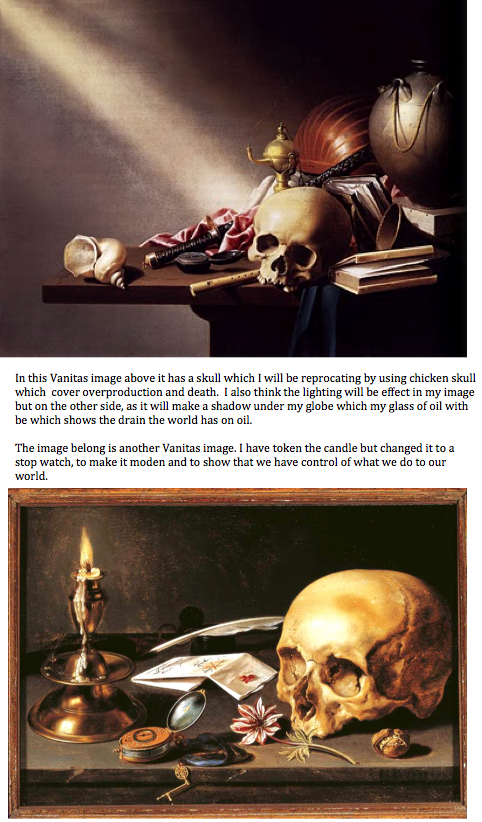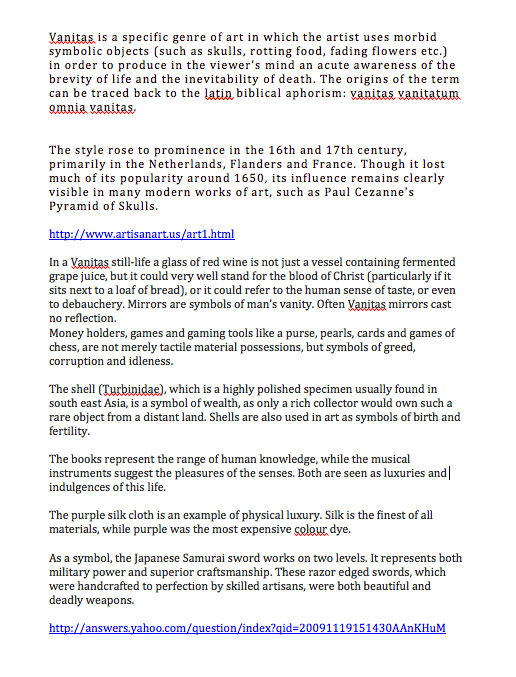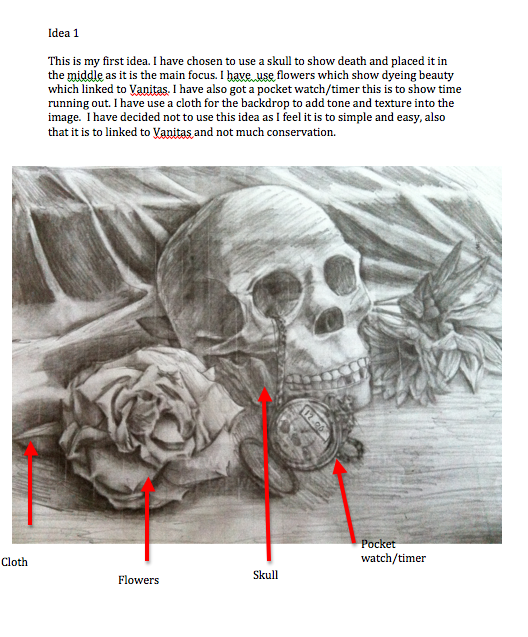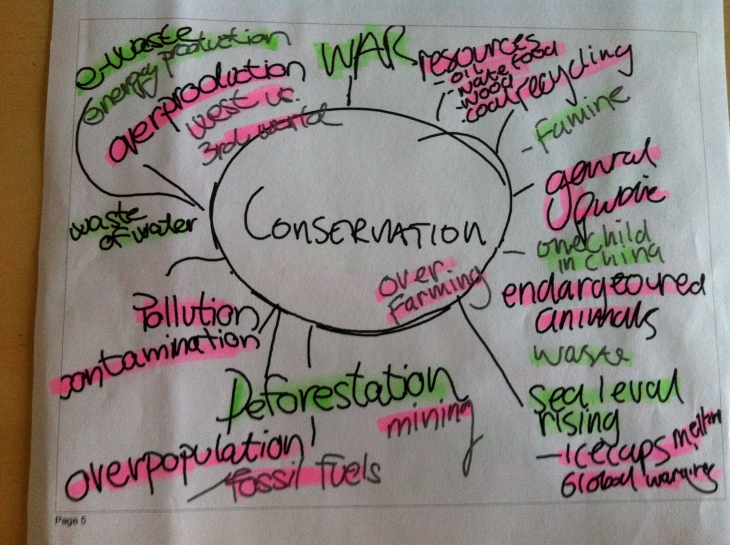



Conservation
Vanitas
Making My Pinhole Camera Part 1
First of all I cut all the sides of my pinhole camera to the size I wanted making sure the lid was slightly bigger. In my front panel I cut a circle shape so I could place a bit of metal behind with my pinhole in the middle. After that I got a coke can cut part of it out I taped the metal sheet to the inside of my front panel and used a ruler to line up where the centre of the metal sheet would be I then used a pin and created my pinhole. Once I had done this I used a glue gun and started to glue my pinhole together. After gluing my pinhole together I taped it to make sure it was light sealed properly and so no light would get through.
About Conservation
Conservation is about preventing damage and loss to our world. It aims to minimise change to the collection of materials, protect items from climate and chemical changes and to safeguard the planet for the future. Conservation is about the protection, preservation and careful management of natural resources, wildlife, nature, energy, fuel and water.
Nonrenewable energy has increased in price due to the fact it is slowly depleting so there is less energy resources available. To help make energy last longer we can reduce how much we use each day. This can be done by turning lights off, turning the heating off or down and turning down boilers. The best solution to this problem is to switch to renewable energy sources such as solar energy or wind turbines as they will always be available to us. Not only is it cheaper for us it is clean and safe for the environment as it does not produce harmful carbon emissions or greenhouse gasses.
People can save money on fuel by not braking or accelerating their car too early or late as it wastes unnecessary fuel. Another way to save fuel is to do all your trips for the day in one big journey. Other ways are to walk, ride bikes, use public transportation and carpooling.
Many habitats are being ruined and destroyed by human intervention. This can be stopped by communities coming together and using their land wisely. They need to identify areas that wildlife use for their habitats and stay clear of them. People must learn not to disturb wildlife in their natural habitat because if they do many wild animals will abandon their habitat if they are disturbed. These small gestures can help to saving wild animals and their habitats.
Many animals are endangered and people still do not notice this and take it for granted. The reasons animals such as lions, tigers, elephants and monkeys are endangered or will be endangered is due to: loss of their habitats, human interference, diseases, pollution and more. There are many charities around the world that have become very popular and their aim is to save these animals. One very well known organisation is The National Wildlife Federation they work hard to protect and defend various wildlife and their habitats. They work to help animals, educate people into being more aware of whats happening and work closely with many people to accomplish their aim.
Water is essential for humans and animals to survive. Recently more and more of the worlds water supply is being depleted due to pollution. When water becomes polluted the chemical, physical and biological conditions of the water change making it unfit for fish to live in and for humans to drink. Water can be polluted by: chemical and industrial waste, thermal pollution from power plants, organic waste, inorganic waste, pesticides, farm waste, fertilisers, household rubbish, household sewage and beauty products and cleaners. About 3% of the worlds water remains unharmed but even those are at risk. Some ways to preserve water is not to throw rubbish into lakes, rivers or streams, cleaning products and cooking oils need to be disposed of properly in a sealed container, biodegradable trash should be disposed of properly so they do not end up in lakes of rivers, use organic products for their gardens and lawns, turn of water that is not being used and wash cars only when needed
Sophie Trickey
About Vanitas
“In the arts, Vanitas is a type of symbolic work of art especially associated with Northern European still life painting in Flanders and the Netherlands in the sixteenth and seventeenth centuries, though also common in other places and periods. The word Vanitas is Latin, meaning “emptiness” and corresponds to the meaninglessness of earthly life and the transient nature of all things.”
- Skull: Death.
- Watch or hourglass: time is limited and is passing, therefore, use it wisely.
- Books: Human knowledge and its temporary nature.
- Artist’s instruments e.g. Palette, brushes, easel: Indulgence in the arts.
- Shell: They were a symbol of the vanity that comes with wealth.
- Insects, decaying flowers: transience of life.
- Broken or tipped over glassware: transience of life or life is fleeting.
- Musical instruments: indulgence of the senses as a luxury. Brevity and the ephemeral nature of life.
- Silk or velvet tablecloths: vanity, as these were expensive things. Silk being the ultimate fabric material and purple the most expensive dye.
- Oriental rugs or carpets: They were a symbol of wealth but also a sign of pride.
- Jewelry, clothes or mirrors: remember the temporary nature of beauty, wealth and wisdom.
- Mirror: a clear symbol of the vanity that should be avoided.
- Jars: Stoneware or porcelain were used for water or oil, both substance sustain life at the time.
- Rotten Fruit: decay
- Bubbles: Brevity of life and suddenness of death.
- Smoke: Brevity of life
- Peeled lemon: like life attractive but bitter to taste.
Sophie Trickey
Research about waste T.H
Food waste facts
All statistics are fully referenced in Tristram Stuart, Waste: Uncovering the Global Food Scandal (Penguin, 2009)
There are nearly one billion malnourished people in the world, but the approximately 40 million tonnes of food wasted by US households, retailers and food services each year would be enough to satisfy the hunger of every one of them.
The irrigation water used globally to grow food that is wasted would be enough for the domestic needs (at 200 litres per person per day) of 9 billion people – the number expected on the planet by 2050.
If we planted trees on land currently used to grow unnecessary surplus and wasted food, this would offset a theoretical maximum of 100% of greenhouse gas emissions from fossil fuel combustion.
10% of rich countries’ greenhouse gas emissions come from growing food that is never eaten.
The UK, US and Europe have nearly twice as much food as is required by the nutritional needs of their populations. Up to half the entire food supply is wasted between the farm and the fork. If crops wastefully fed to livestock are included, European countries have more than three times more food than they need, while the US has around four times more food than is needed, and up to three-quarters of the nutritional value is lost before it reaches people’s mouths.
UK Households waste around 20% of all the food they buy but the good news is that this suggests a 17% reduction since 2007
All the world’s nearly one billion hungry people could be lifted out of malnourishment on less than a quarter of the food that is wasted in the US, UK and Europe.
A third of the world’s entire food supply could be saved by reducing waste – or enough to feed 3 billion people; and this would still leave enough surplus for countries to provide their populations with 130 per cent of their nutritional requirements.
Between 2 and 500 times more carbon dioxide can be saved by feeding food waste to pigs rather than sending it for anaerobic digestion (the UK government’s preferred option). But under European laws feeding food waste to pigs is banned. In Japan, South Korea and Taiwan, by contrast, it is mandatory to feed some food waste to pigs.
2.3 million tonnes of fish discarded in the North Atlantic and the North Sea each year; 40 to 60% of all fish caught in Europe are discarded – either because they are the wrong size, species, or because of the ill-governed European quota system.
An estimated 20 to 40% of UK fruit and vegetables rejected even before they reach the shops – mostly because they do not match the supermarkets’ excessively strict cosmetic standards.
8.3 million hectares of land required to produce just the meat and dairy products wasted in UK homes and in US homes, shops and restaurants. That is 7 times the amount of Amazon rainforest destroyed in Brazil in one year, largely for cattle grazing and soy production to export for livestock feed.
The bread and other cereal products thrown away in UK households alone would have been enough to lift 30 million of the world’s hungry people out of malnourishment
4600 kilocalories per day of food are harvested for every person on the planet; of these, only around 2000 on average are eaten – more than half of it is lost on the way.
24 to 35% of school lunches end up in the bin.
An estimated 15 million tonnes of food wasted in Britain from the plough to the plate.





